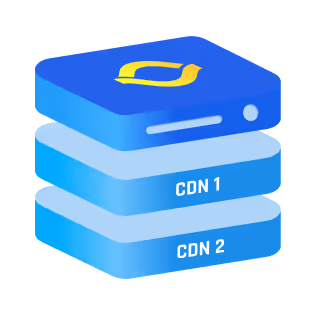Think of your home Wi-Fi as a single, busy road. Every phone, laptop, and smart light bulb is a car. Now picture rush hour, everyone fights for space, and collisions slow you down.
Splitting that road into smaller, quieter side streets would make traffic smoother. In computer networking, those side streets are subnets.
Why You Even Need to Carve Up a Network
Take a company with thousands of devices spread across offices as an example. If every device sits on one giant network, three bad things happen:
- Broadcast storms – Chatty devices shout updates to everyone, wasting bandwidth.
- Security risks – An intruder on one PC reaches the entire crowd.
- Management chaos – Tracking who owns which IP feels like herding cats.
A subnet solves all three. You break the big pool of addresses into smaller, logical neighborhoods.
Each neighborhood handles its own traffic first, blocks outsiders, and gives admins a tidy way to label machines (“Finance PCs live in 192.168.10.x, Engineering uses 192.168.20.x,” and so on).
What Is a Subnet?
A subnet is just a slice of an IP network; that’s it. In IPv4 an address looks like 192.168.10.25. The left side points to a network, the right side points to a host. Where the dividing line sits is up to you.
Move it left, you create more networks with fewer hosts each. Move it right, you create fewer networks with more hosts.
Subnetting is the process of sliding that dividing line until the count of usable addresses matches your real-world needs. Give the printer room for one IP, give the server farm room for five hundred; no waste, no shortage.
{{cool-component}}
Subnets and Network Masks - How They Work
To show computers where that line is, you supply a network mask (same thing as a subnet mask). The mask has ones (1) for “this bit is network” and zeros (0) for “this bit is host.” In dotted-decimal form it looks like 255.255.255.0.
In that example, the first 24 bits are all ones; so 192.168.10.* is the network portion, and the final eight bits (0–255) identify hosts.
Why the weird 255 numbers? Each octet holds eight bits:
- 255 = 11111111 (all network)
- 0 = 00000000 (all host)
Stack four octets together, and you have 32 on/off switches describing any mask you want.
CDR Notation in Subnet Masking
Writing 255.255.254.0 over and over is a drag. Classless Inter-Domain Routing (CIDR) notation replaces the long mask with a slash and a count of the leading ones.
/24 equals 255.255.255.0, /30 equals 255.255.255.252, and so on.
CIDR is shorter, more readable, and baked into nearly every router interface today.
Remember this quick table when planning:
Quick Subnet Calc Tips
If arithmetic scares you, lean on a subnet calc. Most are free web tools or built into operating systems. Still, a couple of back-of-the-napkin tricks help:
- Power of Two Rule – Each borrowed bit doubles the subnet count and halves host capacity.
- Magic Number – Subtract the new subnet octet from 256 to find the block size. Mask 255.255.255.192? 256 − 192 = 64, so subnets start at .0, .64, .128, .192.
- Usable Hosts – Formula is 2^(host bits) − 2. Those two disappear for the network and broadcast addresses.
Practice a few times, then let calculators handle the heavy lifting when you’re tired.
Example: Design for a Growing Office
Scenario: You manage a startup with three departments; Sales (70 PCs), Support (50 PCs), and R&D (30 mixed devices). The ISP gives you 192.0.2.0/24.
- Pick subnet sizes. Sales needs /25 (126 hosts). Support needs /26 (62 hosts). R&D needs /26 (62 hosts).
- Lay out blocks.
- 192.0.2.0/25 → Sales (hosts .1 – .126)
- 192.0.2.128/26 → Support (.129 – .190)
- 192.0.2.192/26 → R&D (.193 – .254)
- Update routers & firewalls. Give each department its own VLAN tied to the mask above.
- Result: Traffic inside Sales stays local. Malware in R&D never sees Sales. Everyone has room to grow, and you still used only one /24 from your provider.
Subnetting in IPv6
IPv6 uses 128-bit addresses, written like 2001:db8:abcd:0012::1. The principles are identical:
- The prefix length (e.g., /64) acts as the subnet mask.
- You still split networks and hosts.
- You still rely on routers to route between subnets.
Because addresses are plentiful, administrators often hand out a /64 to each LAN segment and rarely worry about running out.
Yet planning matters; group related systems, apply firewalls, and label prefixes properly just like in IPv4.
Subnet vs Supernet
You already know a subnet shrinks a network into bite-size chunks. A supernet (sometimes “route aggregation” or “route summarization”) does the opposite: it merges several neighbor networks into one larger route so routers have fewer lines to remember.
Routers forward packets by searching tables that match destination networks plus their network mask. If every tiny subnet shows up separately, tables explode.
With a supernet you advertise one summary; say 192.168.0.0/21; instead of eight individual /24 routes (192.168.0.0/24 through 192.168.7.0/24).
{{cool-component}}
Variable Length Subnet Masking (VLSM)
So far you’ve carved every subnet with the same subnet mask; like giving every moving box the same dimensions. But real networks aren’t that neat. The printer room might need four IPs, while the data-lake cluster needs a hundred.
Variable Length Subnet Masking (VLSM) lets you mix-and-match box sizes in one master block.
- Start with a parent network. Say your ISP hands you 10.0.0.0/24.
- Subnet the biggest need first. R&D wants 100 hosts → grab a /25 (10.0.0.0/25).
- Carve what’s left again. Marketing needs 50 hosts → snag a /26 (10.0.0.128/26).
- Repeat until nothing’s wasted. You finish with several /28 slices for cameras and IoT sensors.
Each new slice gets its own network mask and gateway, yet they all live under 10.0.0.0/24 on paper. That’s VLSM; classic subnetting made flexible.
Your subnet calc becomes your best friend here, because the math piles up fast.
Conclusion
Before you close your browser, open a spreadsheet (or, better yet, a free IPAM tool) and sketch a living map of every subnet you own, tagging each gateway, VLAN ID, and DHCP scope.
That single discipline turns subnetting into an always-up-to-date source of truth, slashing outage time, speeding audits, and giving you the confidence to scale or merge networks in minutes instead of hours.



.png)
.png)
.png)






